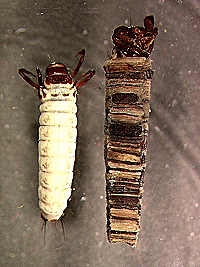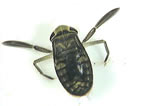
THE XERCES SOCIETY FOR INVERTEBRATE CONSERVATION Aquatic Invertebrates in Pacific Northwest Freshwater Wetlands |
| Identify taxa |
Brachycentridae |
|||
Calamoceratidae |
 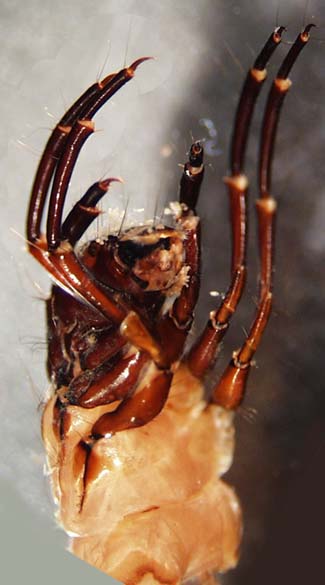 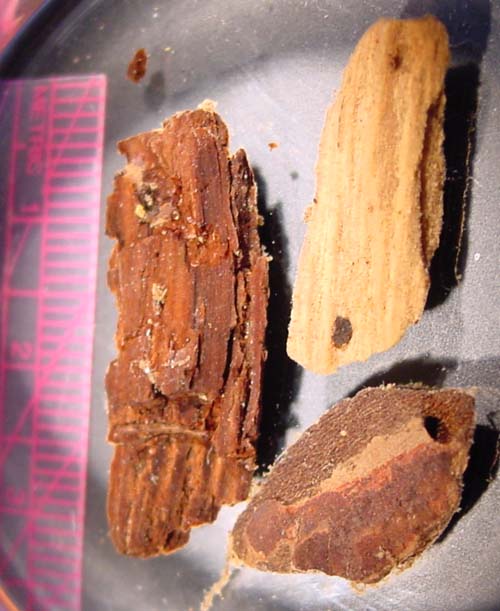 |
||
Glossosomatidae |
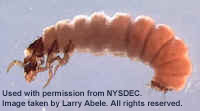 |
||
Lepidostomatidae (lepidostomatid case makers) |
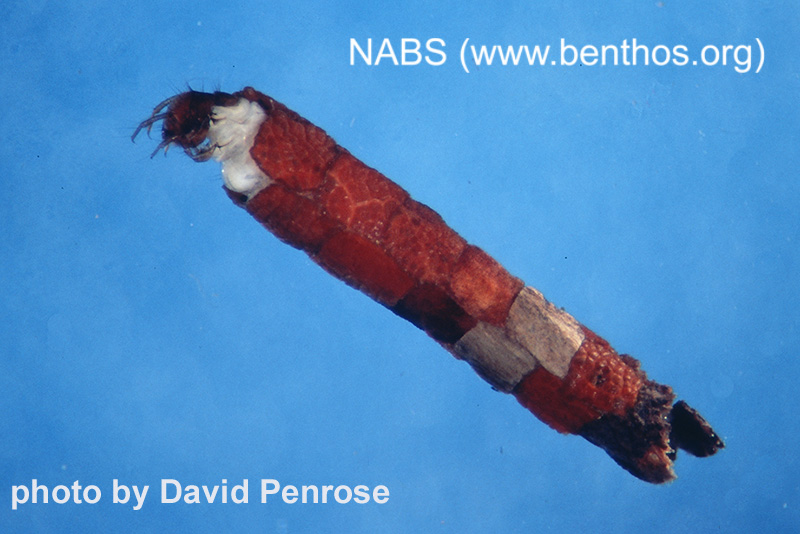 |
||
| Molannidae (hoodcase makers) distribution is northern and eastern; not likely in Northwest; cases have lateral wings and a hood; the claw on the hind leg is modified as a short, hairy stub or a long, thin filament |
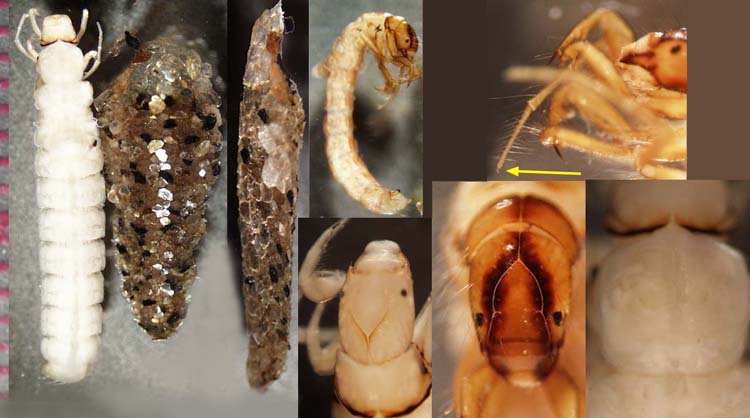 |
||
| Odontoceridae (strongcase makers) dorsal and lateral humps on first abdominal segment; short prolegs; small plates on top of third thoracic segment, but no notch in front of mid-thoracic plate; lack prosternal horn or long antennae; plate on top of ninth abdominal segment; case is round tube of sand and rock. |
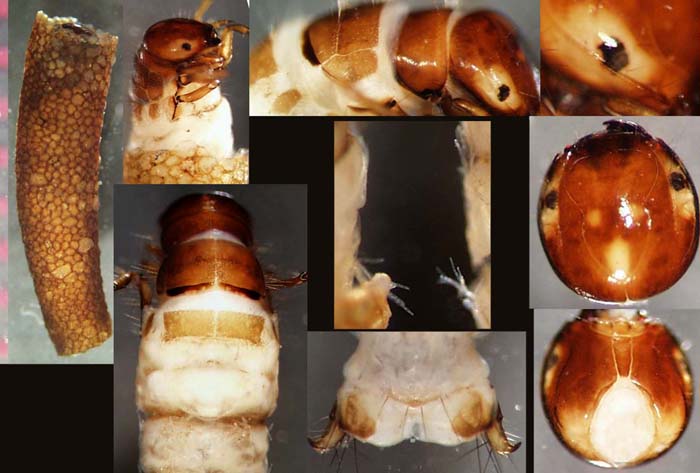 |
||
|
Philopotamidae (fingernet caddisflies) anal prolegs long and well developed; only the first thoracic segment is covered by a plate; yellowish body; fleshy, white, T-shaped labrum on front of head is unique to the family, though not always obvious; foretrochantin varies |
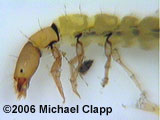 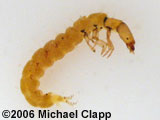 |
||
|
|||
| Psychomyiidae (nettube caddisflies) anal prolegs long and well developed; only the first thoracic segment is covered by a plate; foretrochantin is uniquely hatchet-shaped; body usually pinkish but head not spotted; top of last abdominal segment lacks hard plate; labrum is not fleshy and T-shaped |
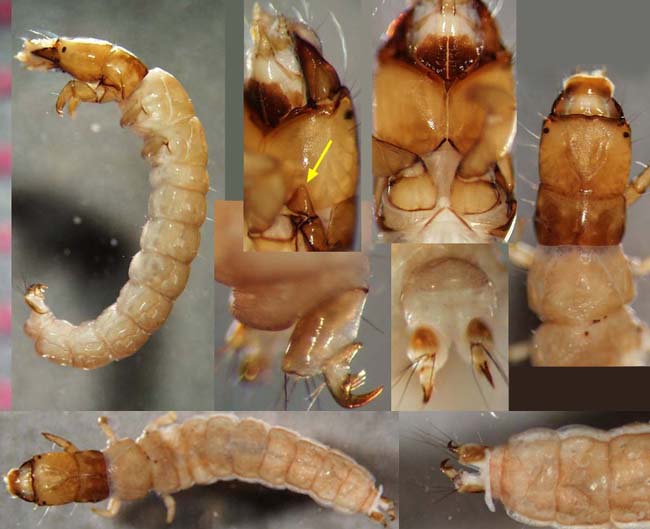 |
||
| Rhyacophilidae (free-living caddisflies, green rock worms) anal prolegs long and well developed; only the first thoracic segment is covered by a plate; foretrochantin is not well developed; greenish body; abdomen has deep constrictions at each segment |
 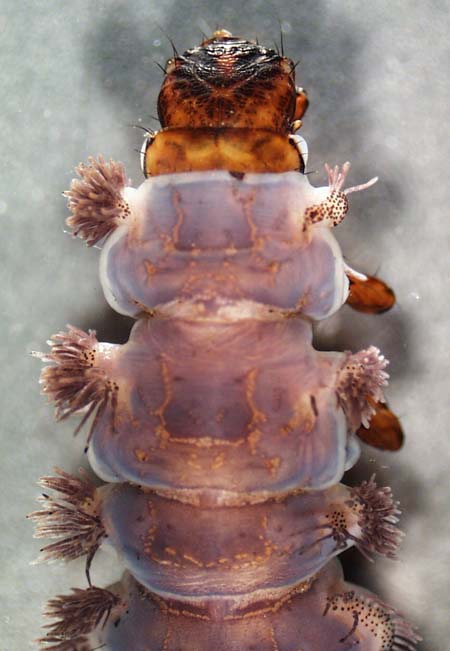 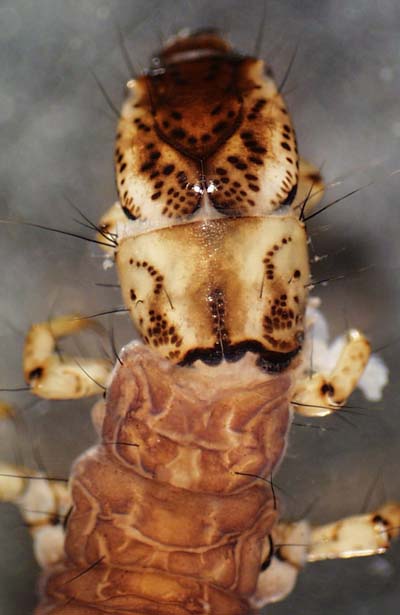 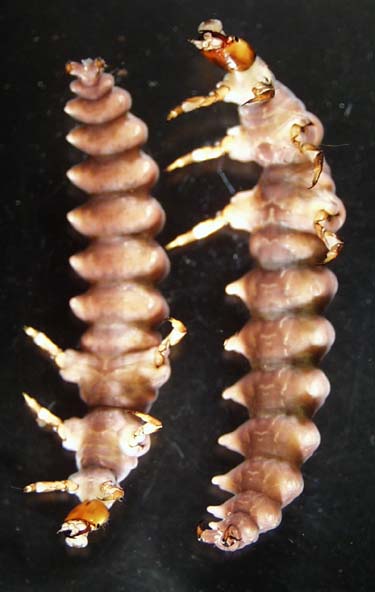 |
||
|
Sericostomatidae (bushtailed case makers) dorsal and lateral humps; short prolegs; small plates on top of third thoracic segment, but no notch in front of mid-thoracic plate; without long antennae; without sharp processes on the sides of the middle thoracic segments |
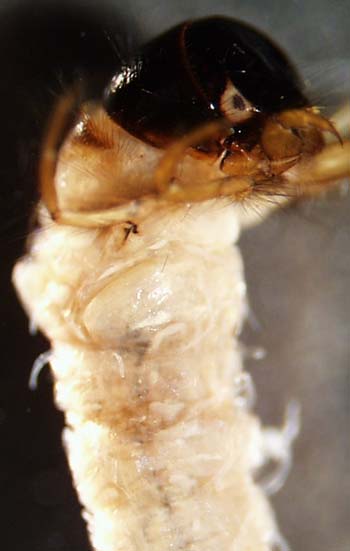 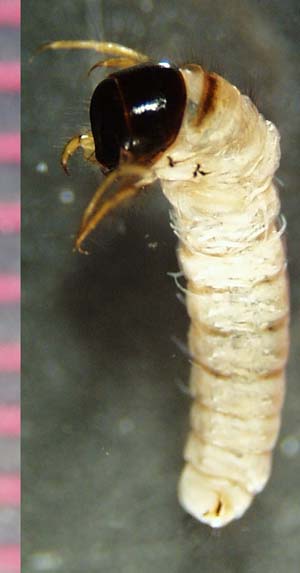 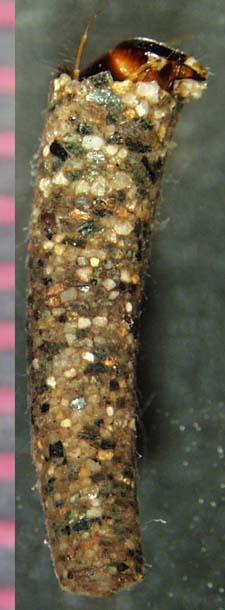 |
© 2007 Xerces Society
Contact info@xerces.org
